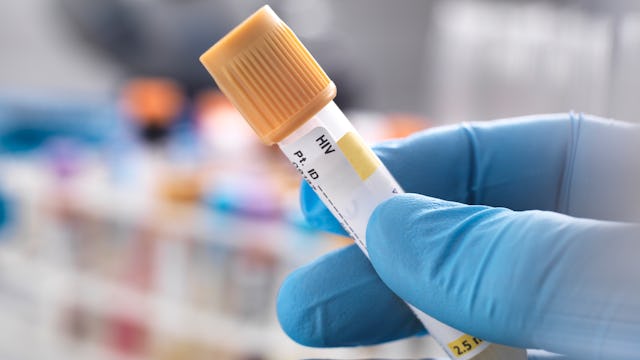Scientists Report They've 'Cured' Second Patient Of HIV

After a bone marrow transplant, the deadly HIV virus can no longer be detected in the patient’s body
For only the second time in over decade, scientists have reported that they’ve “cured” HIV in a patient, completely eliminating the virus from the man’s body through a bone marrow transplant. While the news likely won’t lead to a widespread cure in upcoming years, for a couple of reasons, it’s still a big leap forward in HIV and AIDS research.
The cure announcement was made in a report published in Nature, from a group of researchers working at University College London.
In this most recent case, doctors performed a bone marrow transplant (also known as a stem cell transplant) on a patient suffering from both HIV and Hodgkin’s lymphoma, a common cancer. The person who donated their stem cells had a CCR5 gene mutation, which protects the small percentage of the population that carries it from the most common strain of HIV. Very basically, the man (who is remaining anonymous) was given a new immune system that protected him from the virus.
The man was diagnosed with HIV in 2003 and cancer in 2012. He underwent the stem cell transplant 18 months ago and now shows no trace of the virus in his body. Two months ago, he stopped taking the anti-viral medications that most HIV patients are on to manage the disease.
“I feel a sense of responsibility to help the doctors understand how it happened so they can develop the science,” he told The New York Times. “I never thought that there would be a cure during my lifetime.”
He also said that being cured of both cancer and HIV was “surreal” and “overwhelming.”
This is only the second time that HIV has been cured in a patient – despite many attempts after the first cure was announced. The first time it happened was with a man named Timothy Ray Brown, also known as the Berlin patient, who was cured in 2007 after a similar stem cell transplant. Twelve years later, though there are some small traces of the virus in some of his cells, he is ostensibly without signs or symptoms of the disease.
Researcher Ravindra Gupta writes, “it is premature to conclude that this patient has been cured,” but at the same time, the virus has been completely eliminated and many researchers are celebrating it as such.
While this is good news, researchers warn that this is only another step on what’s likely a long path toward a viable and easy cure. Stem cell treatments are very risky, difficult, painful, and expensive – and at least at this point, the outcome is far from guaranteed. You also need to find a donor with a CCR5 mutation, which is about one percent of the population. While some cancer patients get stem cell treatments in hopes of a cure, they are usually in a more dire situation than HIV patients, who now can enjoy full lifespans as long as they are properly medicated.
However, doctors stress that while it isn’t an all-out cure, it’s still very good news.
“This will inspire people that cure is not a dream,” Dr. Annemarie Wensing, a virologist at the University Medical Center Utrecht in the Netherlands, told the New York Times. “It’s reachable.”